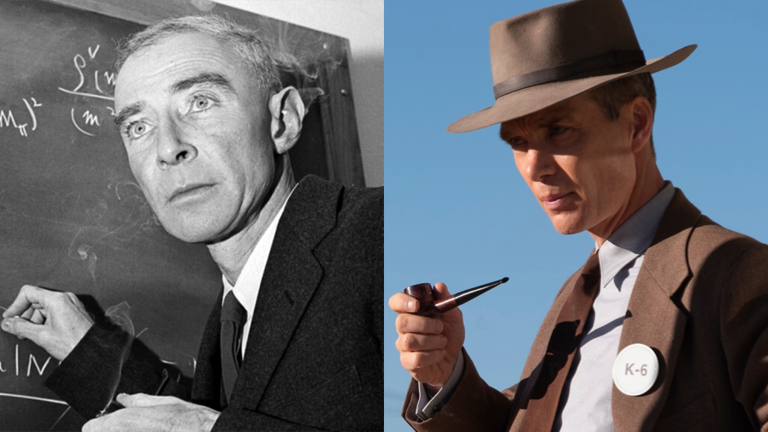Opinion by Avraham Shama, Opinion Contributor•The Hill

“Oppenheimer,” the acclaimed movie by Christopher Nolan, has brought to life the fear of communism of the 1940s and the 1950s. And recently, a similar concern has emerged that Russia wants to annex Ukraine and further spread into Europe and beyond.
The dread back in the 40s and 50s was that the communist ideology, already at work in Russia, was taking root in the United States and turning it communist. The dogma was already spreading in institutions of higher education such as the University of California at Berkeley and among top scientists such as J. Robert Oppenheimer, the father of the atomic bomb.
Never mind that he was never a member of the Communist Party — in fact, he distanced himself from it — and that the Communist Party of the United States of America was relatively small and its goals modest.
Such fear became so palpable that the U.S. House of Representatives initiated the Un-American Activities Committee to investigate disloyalty and subversive acts of Americans. This led to the creation by the Senate of the Government Operations Committee, later known as McCarthyism, and to the outlawing of the party by President Dwight Eisenhower in 1954.
In this climate of fear and anxiety, anyone — especially respected figures like Oppenheimer — became guilty by association. This cost Oppenheimer humiliation and his top security clearance — Q clearance — in 1954. Many others lost their livelihoods.
Now we’re all “Oppenheimer communists.” The goals of the party then were for workers to have the right to organize, for employees to have decent working conditions and better wages and for Black workers to be treated fairly. Today, such goals are supported by almost every American, regardless of political affiliation. Indeed, they are considered basic rights. The Communist Party USA of the 1940s didn’t even dream of paid vacation leave, paid sick leaves and paid maternity and paternity leaves.
Furthermore, at its peak in 1947, the Communist Party had 75,000 members, according to one estimate. Imagine that: 75,000 unarmed people creating such deep, almost irrational, fear among a population of 144 million in 1947.
It is hard to comprehend that such a small number of people mobilized the U.S. House of Representatives, the Senate and the president of the United States to take such disproportional measures to stop the demands for better working rights and conditions.
But a more realistic explanation is that those drastic measures were calculated political acts by the U.S. government to solidify an emerging, post-World War II political order that became to be known as the Cold War.
And now, the U.S. is confronting a similar situation — Russia’s threat to take over Ukraine and increase its influence in Europe, Africa and the Middle East. But unlike the fear of communism immediately after World War II, the United States is in a more solid position to deal with it appropriately, not disproportionately.
Finally, a significant number of the scientists developing the bomb that ended the war and ensured the U.S. global leadership for years to come were immigrants, some from Germany. Some were rejected by the Nazis because they were doing “Jewish physics,” while German scientists preferred “Deutsche Physik.”
Now, many immigrants are leading tech companies (55 percent of startups), and populating university faculties (22 percent) and medical centers (29 percent). This bodes well for the continued U.S. leadership in science, technology and economics. But it requires that our leaders be willing to support and even recruit such immigrant talent.
Avraham Shama is the former dean of the College of Business at the University of Texas, The Pan-American. He is a professor emeritus at the Anderson School of Management at the University of New Mexico. His new book, “Cyberwars: David Knight Goes to Moscow,” was recently published by 3rd Coast Books.
No comments:
Post a Comment